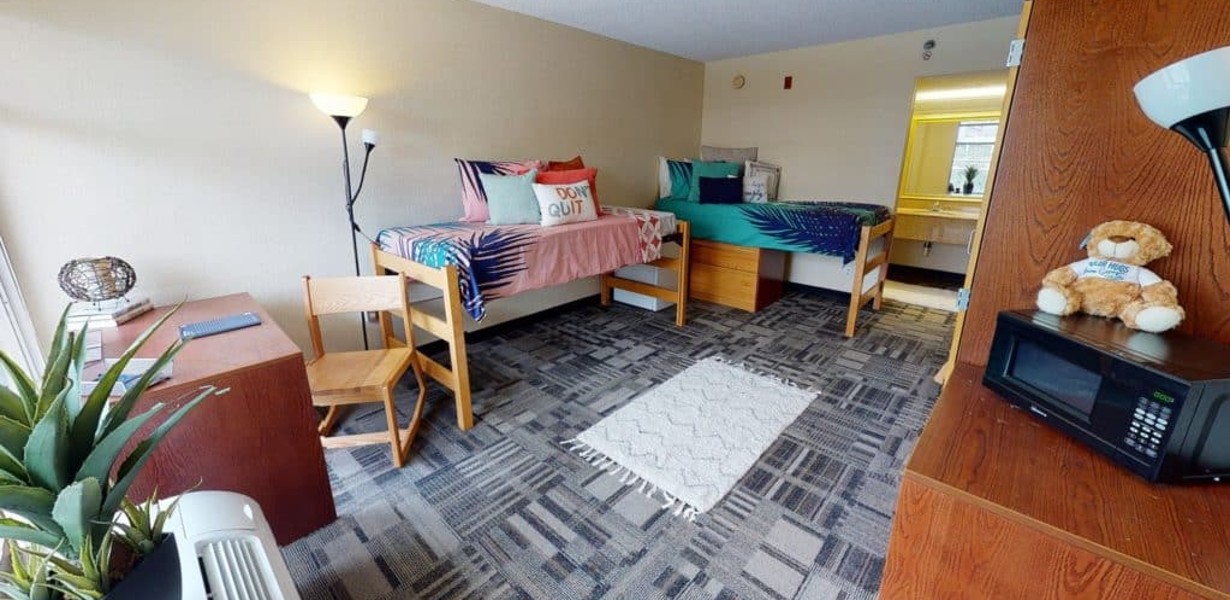
Welcome to our in-depth exploration of dormitory rooms, a crucial aspect of the virtual campus tour. When you’re preparing for college, understanding your living space is as important as choosing your courses. In this guide, we will take you on a journey through dormitory rooms, providing you with insights and tips to ensure a smooth transition to campus life.
Understanding Dormitory Rooms
Dormitory rooms are the cornerstone of your campus experience. These living spaces are where you’ll eat, sleep, study, and bond with roommates. Typically, you’ll find two main types of dormitories:
Single Rooms
Single rooms provide privacy and solitude. They’re ideal for students who prefer personal space and a quiet environment. You’ll have your own room and, in many cases, a private bathroom.
Shared Rooms
Shared rooms are for those who enjoy company and want to socialize with roommates. It’s an excellent way to make friends quickly. Typically, you’ll have a roommate, and shared facilities like bathrooms and common areas.
Making the Most of Your Dormitory
Moving into a dormitory room can be a transformative experience. Here are some tips to ensure you make the most of your space:
Personalize Your Space
Bringing a few personal items like posters, photos, and decorative touches can turn a plain dorm room into a cozy haven. Personalization is key to feeling at home.
Organization Is Key
Dorm rooms are not known for their ample space. Invest in storage solutions like under-bed containers and wall-mounted shelves to keep your space tidy and organized.
Get to Know Your Roommate
If you have a roommate, open communication is essential. Discuss rules, expectations, and any potential issues early to maintain a harmonious living environment.
Study Space
Create a designated study area within your room to stay focused and productive. A comfortable chair and desk are must-haves.
Common Dormitory Amenities
Besides your living space, dormitories often offer common amenities such as:
Common Kitchens
These communal kitchens are perfect for preparing your meals, especially if you’re not a fan of the campus cafeteria food.
Laundry Facilities
Most dorms have laundry facilities, so you don’t need to lug your dirty clothes home.
Lounges and Recreation Areas
These spaces are perfect for socializing, watching TV, or playing games with friends.
Resident Advisors (RAs)
RAs are there to support you. They can help with any questions or concerns you may have while living in the dormitory.
Final Words
Choosing the right dormitory room and making the most of it is a significant part of your college experience. Your living space is not just a place to sleep; it’s a place to learn, grow, and connect with others. Use this guide to help you navigate the exciting world of dormitory rooms, and make the most of your time on campus.
Commonly Asked Questions
Q1: What should I bring to my dormitory room?
A: Consider essentials like bedding, toiletries, clothing, school supplies, and personal items to make your room feel like home.
Q2: How do I choose between a single and shared dormitory room?
A: Consider your personal preferences and priorities. If you value privacy, a single room may be ideal. If you’re outgoing and want to make friends, a shared room can provide more opportunities.
Q3: Are there gender-neutral dormitory options?
A: Many colleges offer gender-neutral housing options to accommodate all students. Check with your college’s housing department for more information.
Q4: Can I request a specific roommate?
A: Some colleges allow roommate requests. Check your college’s housing policies for details on how to make such a request.
Q5: How do I report issues or problems in the dormitory?
A: You can contact your Resident Advisor (RA) or the housing department to report any issues or problems within the dormitory.
Advertisement








